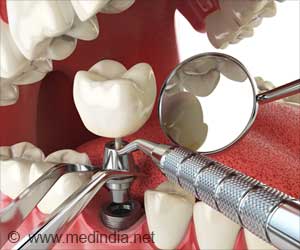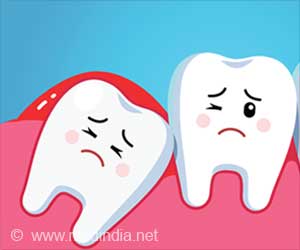Oral diseases present a major global public health burden, affecting 3.5 billion people worldwide, yet oral health has been largely ignored by the global health community.

‘Topical fluorides to control tooth decay, strict regulations and laws to restrict marketing and influence of sugar, tobacco and alcohol industries could help curb oral health crisis.’
Read More..




Oral diseases, including tooth decay, gum disease and oral cancers, affect almost half of the global population, with untreated dental decay the most common health condition worldwide. Lip and oral cavity cancers are among the top 15 most common cancers in the world. In addition to lower quality of life, oral diseases have a major economic impact on both individuals and the wider health care system.Read More..
Accessing dental care continues to present the highest cost barrier compared to any other healthcare service in the United States (U.S.) and the highest dental expenditures globally were found for the U.S. ($129.1 billion).
The Lancet Series on Oral Health led by University College London (UCL) researchers brought together 13 academic and clinical experts from 10 countries, including the US, to better understand why oral diseases have persisted globally over the last three decades, despite scientific advancements in the field, and why prevalence has increased in low- and middle- income countries (LMIC), and among socially disadvantaged and vulnerable people, no matter where they live.
A tipping point for global oral health
"Dentistry is in a state of crisis," said Professor Richard Watt, Chair and Honorary Consultant in Dental Public Health at UCL and lead author of the Series. "Current dental care and public health responses have been largely inadequate, inequitable, and costly, leaving billions of people without access to even basic oral health care. While this breakdown in the delivery of oral healthcare is not the fault of individual dental clinicians committed to caring for their patients, a fundamentally different approach is required to effectively tackle to the global burden of oral diseases."
Advertisement
Professor Robert J. Weyant, DMD, DrPH Professor and Chair, University of Pittsburgh, Department of Dental Public Health, said: "The U.S. continues to struggle with how to best ensure access to affordable dental care for many individuals. This has led to ongoing suffering for many with oral disease and significant disparities in oral health for vulnerable populations such as poor families, ethnic minorities, and the elderly. The Affordable Care Act helped to expand access to dental care for millions but many still remain unable receive needed care, highlighting an urgent need for improvements in dental health policy."
Advertisement
Coverage for oral health care in LMIC is vastly lower than in HIC with median estimations ranging from 35% in low-, 60% in lower-middle, 75% in upper middle, and 82% in high income countries.
Sugar, alcohol and tobacco industries fuel global burden
The burden of oral diseases is on course to rise, as more people are exposed to the main risk factors of oral diseases. Sugar consumption, the underlying cause of tooth decay, is rising rapidly across many LMIC. While sugary drinks consumption is highest in HIC, the growth in sales of sugary drinks in many LMIC is substantial. By 2020, Coca-Cola intend to spend US$12 billion on marketing their products across Africa [5] in contrast to WHO's total annual budget of $4.4 billion (2017).
"The use of clinical preventive interventions such as topical fluorides to control tooth decay is proven to be highly effective, yet because it is seen as a 'panacea', it can lead to many losing sight of the fact that sugar consumption remains the primary cause of disease development." said Watt. "We need tighter regulation and legislation to restrict marketing and influence of the sugar, tobacco and alcohol industries, if we are to tackle the root causes of oral conditions."
Writing in a linked commentary, Cristin E Kearns of the University of California and Lisa A Bero of the University of Sydney raise additional concerns with the financial links between dental research organisations and the industries responsible for many of these risk factors.
"Emerging evidence of industry influence on research agendas contributes to the plausibility that major food and beverage brands could view financial relationships with dental research organisations as an opportunity to ensure a focus on commercial applications for dental caries interventions--eg, xylitol, oral hygiene instruction, fluoridated toothpaste, and sugar-free chewing gum--while deflecting attention from harm caused by their sugary products."
Lancet Series authors argue a pressing need exists to develop clearer and more transparent conflict of interest policies and procedures, and to restrict and clarify the influence of the sugar industry on dental research and oral health policy.
Radical reform of dentistry needed
Lancet Series authors have called for wholesale reform of the dental care model in five key areas:
1. Close the divide between dental and general healthcare
2. Educate and train the future dental workforce with an emphasis on prevention
3. Tackle oral health inequalities through a focus on inclusivity and accessibility
4. Take a stronger policy approach to address the underlying causes of oral diseases
5. Redefine the oral health research agenda to address gaps in LMIC knowledge
Dr Jocalyn Clark, an Executive Editor at The Lancet, said: "Dentistry is rarely thought of as a mainstream part of healthcare practice and policy, despite the centrality of the mouth and oral cavity to people's well-being and identity. A clear need exists for broader accessibility and integration of dental services into healthcare systems, especially primary care, and for oral health to have more prominence within universal health coverage commitments. Everyone who cares about global health should advocate to end the neglect of oral health."
APPENDIX OF KEY FACTS & STATISTICS
Oral disease: types and causes
The global burden of oral disease
Inequalities in oral disease
Prevention.
Source-Eurekalert












